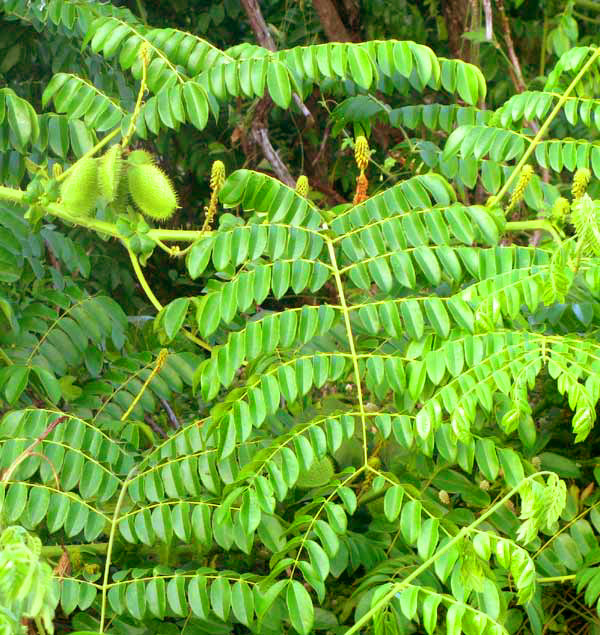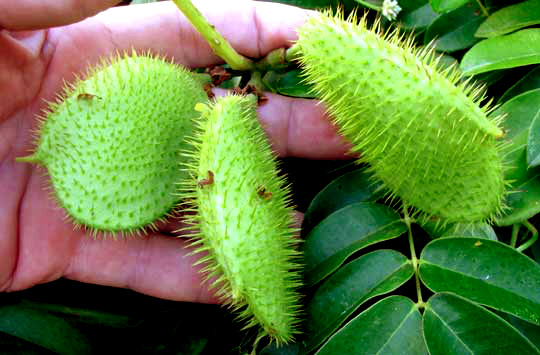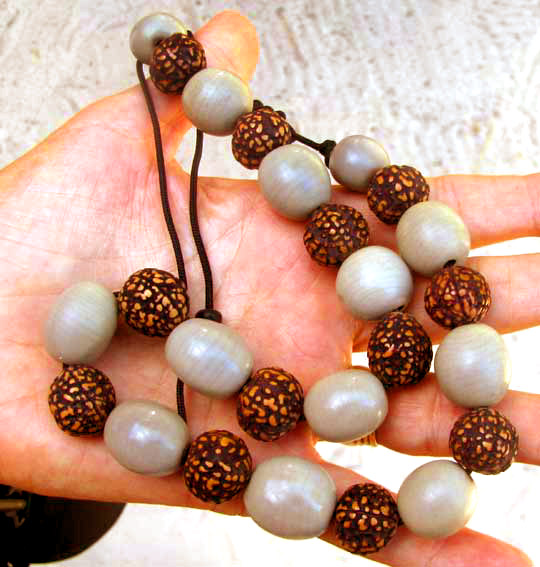Excerpts from Jim Conrad's
Naturalist Newsletter

from the May 8, 2011 Newsletter issued from Mayan Beach Garden Inn 20 kms north of Mahahual; Caribbean coastal beach and mangroves, ~N18.89°, ~W87.64°, Quintana Roo state, MÉXICO
GRAY NICKERNUTS
Gray Nickernut plants, which are woody, scrambling shrubs climbing up to 16 feet high (5m), produce one of the most sought-after sea-beans, and those beans wash onto the beach here. A few years back Marcia planted some Gray Nickernut beans next to the hotel and now the plants robustly clamber over all other vegetation, clear into the mangrove swamp. You can see a small section of one such shrub, bearing twice-compound, 15-inch-long (40cm), prickly leaves, upright racemes of tiny flowers, and some green, soft-spiny fruits, each fruit containing one or two nickernuts, above.
A close-up of three nickernut legumes is shown below:

A necklace owned by Marcia in which gray, lustrous, spherical Gray Nickernut beans are strung appears below:

We don't know what the dark, spotted items in the necklace are, but you can see that the nickernuts shine like pearls.
Gray Nickernuts are known to science as CAESALPINIA BONDUC.
Gray Nickernut plants, thanks to their beans' ability to float long distances on ocean currents, occur in tropical and subtropical coastal environments nearly worldwide, including the US's coastal Florida, Louisiana and Texas. They are abundant near the beach in nearby Sian Ka'an Biosphere Reserve.